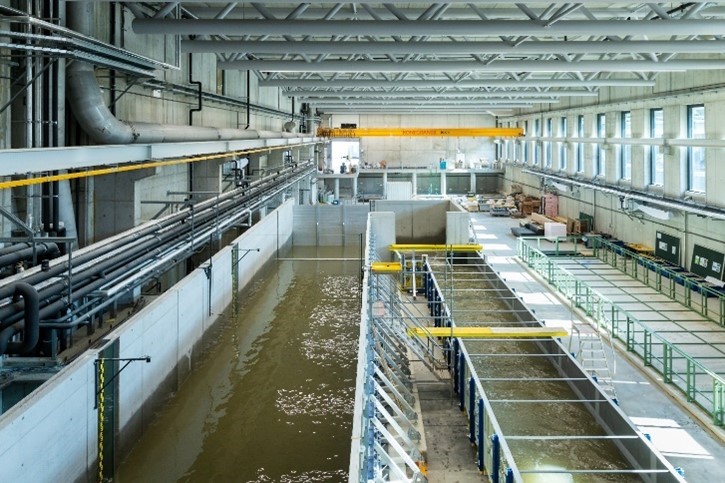
Why a River Lab?
In the 2000s, it became increasingly evident that various calculation methods, such as those used in sediment transport, had limited validity when compared to observations in natural environments. This was confirmed by numerical simulations and relatively large-scale model experiments, whose results, however, could not be verified in real-world conditions. It became clear that one possible explanation for these discrepancies lay in the scale of the model experiments, where critical processes and hydrodynamic phenomena were not adequately represented.
Additionally, the limitations of model experiments in addressing specific research questions became apparent, such as the influence of vegetation on flow behavior, the behavior of fish, or the drift behavior of humans during floods. To address these challenges, the goal was set to conduct experiments on as large a scale as possible (up to 1:1), surpassing the capabilities of existing laboratories.
It quickly became clear that achieving this would require a large water flow, which was set at 10 m³/s for the hydraulic engineering laboratory. Since sustainably pumping this volume of water was not feasible, a concept was developed to draw water from the Danube—located 3 meters higher than the Danube Canal—using a free-surface flow system without pumps. The water would then flow through the laboratory. This approach required a comprehensive assessment of its technical and financial feasibility.
What is the Idea?
With a flow rate of 10,000 liters per second without the use of pumps, the new hydraulic engineering laboratory has a unique position worldwide. Model experiments at scales of up to 1:1 will significantly advance the understanding of river use and protection. This facility enables both fundamental and applied research that is globally unparalleled.
The research topics include the movement of water and sediments, the ecology and management of rivers, flood risk management (ranging from floodplain management to mobile flood protection), river restoration with a focus on sediment balance, renewable energy (sustainable hydropower), waterway research, and low-flow management during droughts in the context of climate change. The three-meter water level difference between the Danube and the Danube Canal allows water to flow through the laboratory without pumps and thus without external energy. This feature makes the BOKU Hydraulic Engineering Laboratory a globally unique research facility with unmatched experimental capabilities.
The River Lab
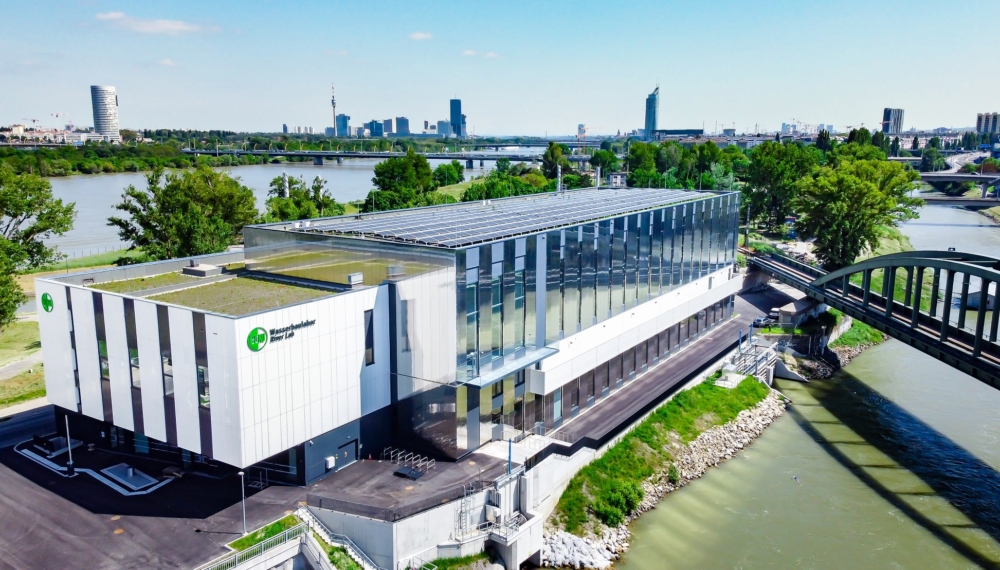
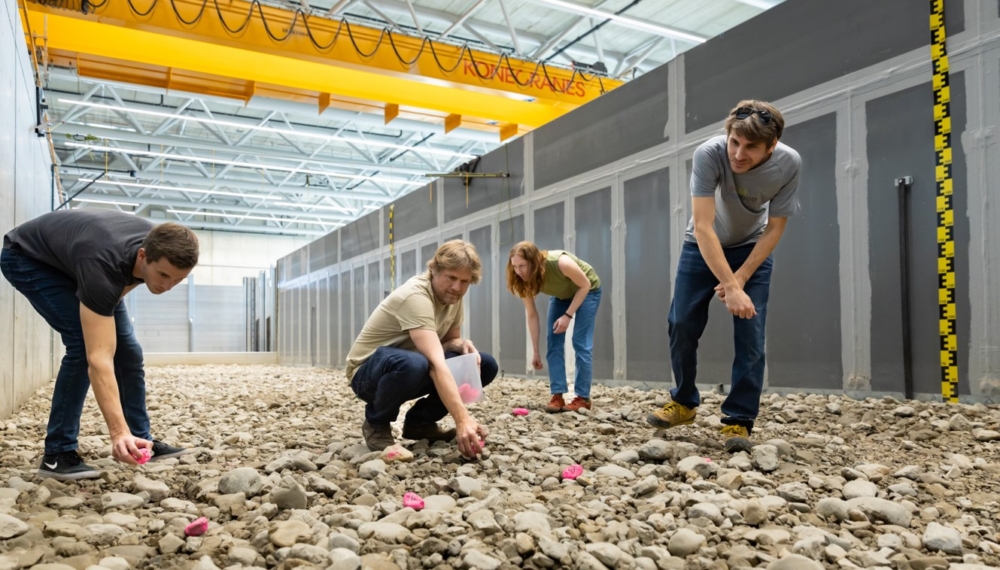
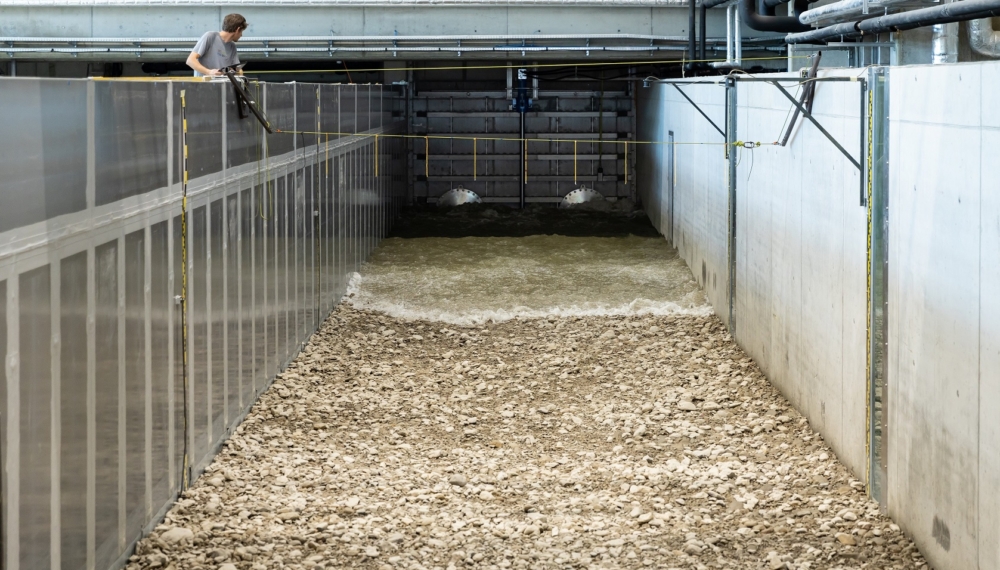
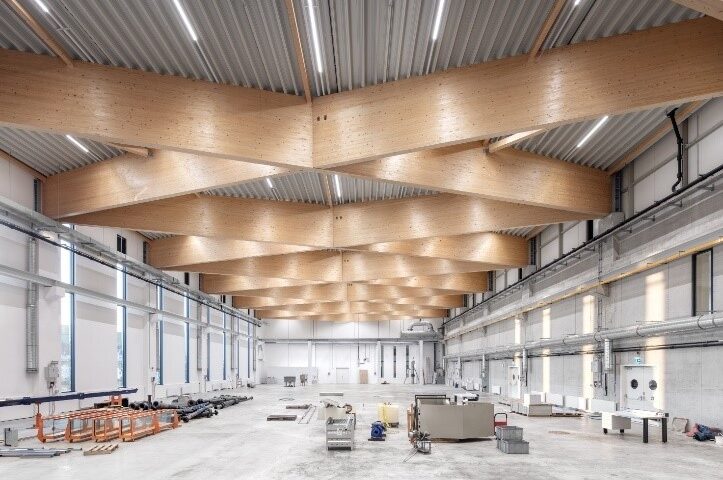
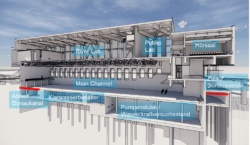
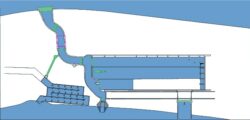
How was this idea realised?
It took 14 long and eventful years, overcoming various obstacles, from the initial idea to the completion of the building. The construction phase alone lasted three years. The total cost of approximately 49 million euros was funded by the European Regional Development Fund (through four EU projects with Hungary, Slovakia, and the Czech Republic, as well as through the “Investments in Growth and Employment Austria” program), the City of Vienna, the Province of Lower Austria, and several Austrian federal ministries, including the Ministry of Education, Science and Research; the Ministry of Agriculture, Forestry, Regions and Water Management; the Ministry of Climate Action, Environment, Energy, Mobility, Innovation and Technology; and the Ministry of Labor and Economy.
The building, with a total area of 12,300 m², combines teaching and research across a variety of uses. It includes a lecture hall and seminar room for approximately 200 students, two large laboratory spaces (the Main Channel and River Lab) covering a total of 3,500 m², a Public Lab of 400 m², an Outdoor Lab, specialized laboratories, meeting rooms, and a library. Additionally, the office wing spans three floors and provides workspaces for 100 people.
Federal Agency for Water Management@ BOKU River Lab
In addition to the Institute of Hydraulic Engineering and River Research, the Institute for Hydraulic Engineering and Hydrometry (Federal Agency for Water Management) is also located to the River Lab, so the infrastructure is being used efficiently.
Main Channel
